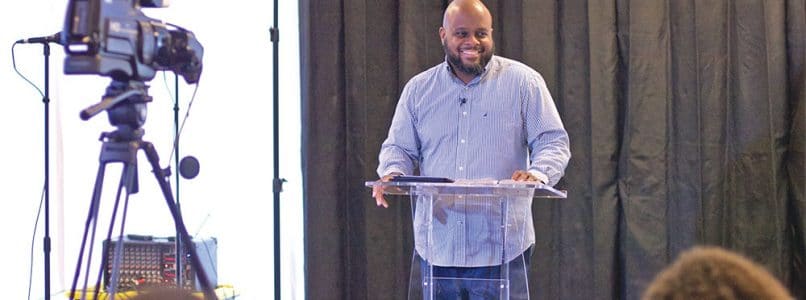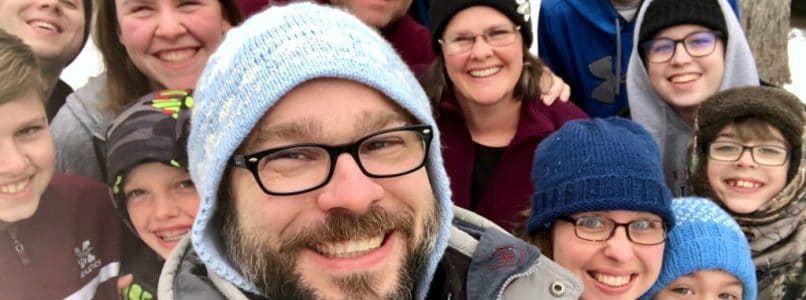GRAPEVINE—Over the last several months, the Southern Baptists of Texas Convention has undergone a significant strategic and operational restructure aimed at streamlining the convention’s efforts to minister to churches.
The process began in the spring of 2020, when the pandemic forced the convention to be more creative in examining the needs of the churches and determining how best to formulate a response.
“The SBTC was formed by the churches for the purpose of facilitating their Great Commission work. The pandemic has been a unique challenge to that work,” Executive Director Jim Richards said. “Our first effort last spring was to contact all our churches to encourage them and to see what help they might need. We then formed a COVID task force to provide resources fit for the challenges the churches were facing.”
As the convention began responding to the needs arising in Texas churches, it became apparent that more comprehensive revisions would be necessary.
“The pandemic’s impact is going to be long term. The convention needed to pivot in order to be a relevant resource for our churches in the future,” Richards said. “After asking hundreds of our leaders for input, a new task force recommended to our board a structure and a vision for the convention’s future.”
In August, the SBTC Executive Board affirmed a re-engineering of the convention’s work that would reduce the number of departments from seven to five, including the creation of the new Church Health and Leadership department, which combined the former Pastor/Church Relations and Church Ministries areas.
“It is more than just shoving two organizational charts together,” Tony Wolfe, CH&L senior strategist, told the TEXAN of the realignment.
Wolfe said the revisioning is an opportunity to provide local churches with relevant resources to help leaders at every level.
“It’s more than just an organizational shift. In my mind it’s a strategy shift, to unify the strategy toward church health and church leadership health. We’re hoping we can start getting on the front end of things and, prayerfully, that ultimately might position churches to receive spiritual awakening, if God chooses to send it,” he said. “And it might even reduce our clean-up on the back end when churches and their leaders are unhealthy.”
A survey sent to statewide pastors and associational leaders received almost 400 responses, Wolfe said, and was instrumental in the formation of the new department.
Needed: healthy churches
“One of the things that came to the top very quickly and stayed at the top was this resounding desire from our churches that we would focus on church health,” Wolfe said, explaining that among the items on the survey was the question: What is a healthy convention?
“Basically when we combined all of those answers what we got was a healthy convention is made up of healthy churches, and healthy churches are led by healthy leaders,” Wolfe said.
The survey indicated that the convention needed to focus not only on evangelism, church planting and revitalization, but on church health more generally. And while the former structure of the convention tended to place much of the priority on the senior pastor, CH&L has oriented its work so that leaders at every level, both lay and vocational, will receive specific resources aimed at healthy leadership.
According to Wolfe, some of the strategies they are pursuing come from lessons learned when he worked in what was formerly known as Pastor/Church Relations.
“I finally realized that if we were going to make a dent in this, we were going to have to get on the front end of pastor health and church health instead of just always cleaning up from the back end. And so we kind of carry over that same mindset into the Church Health and Leadership department, where we’re not just focusing on the pastor office but we’re focusing on all church leaders.
“So CH&L is going to span the full spectrum of church leadership, vocational and volunteer, from the pastor, deacon, children’s minister, youth minister, security team, hospitality team, women’s ministry leader, nursery team—you name it. We’re going to try to pour the same level of effort into the front end of helping church leaders be healthy.”
Tools to help
Wolfe said they are hoping to release a church assessment tool in March which will offer not only a self-evaluation for churches, but will also directly connect them with SBTC resources designed to meet their specific needs.
“There will be 10 touch points for church health, including prayer, evangelism, devotion to God’s Word, reproduction, leadership, worship ministry, prayer ministry and more,” he said. “Whenever their self-assessment pushes them to their three top needs, the tool will immediately redirect them to resources and relationships where they can find help.”
Church Health and Leadership Team Leader Jeff Lynn emphasized the convention’s desire to come alongside churches to assist in whatever ways possible.
“We believe that God is about to bring awakening to the Lone Star State, and we believe that as much as it depends on us, we want to help churches receive it,” he said. “And because healthy churches are led by healthy leaders, we look to encourage, resource and network not only pastors and their wives, but all church leaders in every vein of ministry, whether lay or vocational.”
Both Wolfe and Lynn urged churches to reach out to the SBTC no matter what their needs may be.
“Our team is trained and experienced walking with pastorless churches through seasons of transitions, leading established churches through a proven process of revitalization and serving local congregations in all forms of conflict and crisis management,” Wolfe said.
Ultimately, a convention of churches is only as strong as the churches themselves. Church Health and Leadership is designed to work with and for churches, providing resources to help pastors and laypeople alike develop healthy habits and relationships.
“At the end of Acts 15 as Paul is beginning his second missionary journey, he chose Silas and they traveled throughout the region strengthening the churches,” Wolfe said. “The Church Health and Leadership team has only this in mind—strengthen the churches.”
You can also listen to the biweekly Church Health and Leadership podcast, hosted by Wolfe and Lynn, available from Apple Podcasts.















